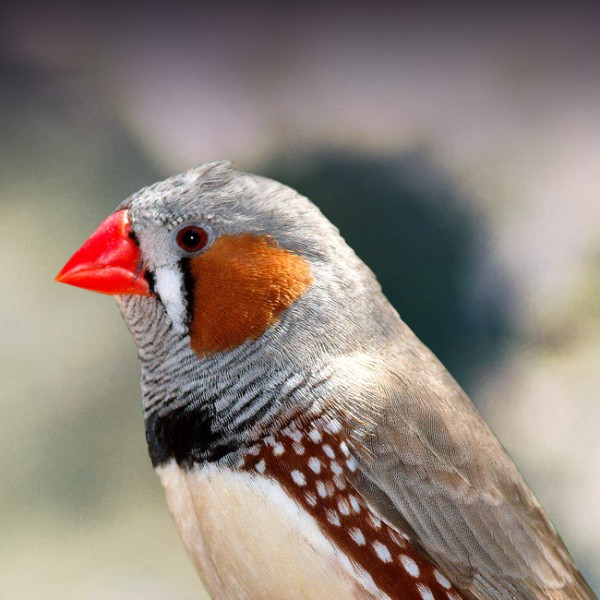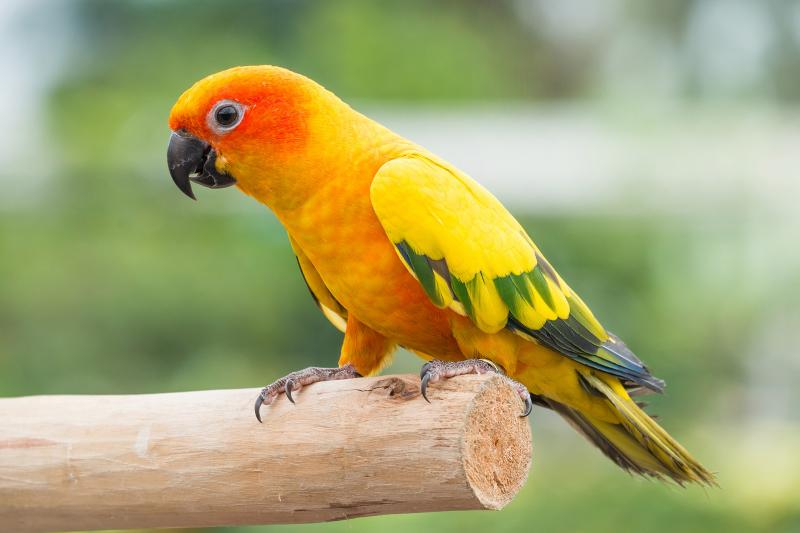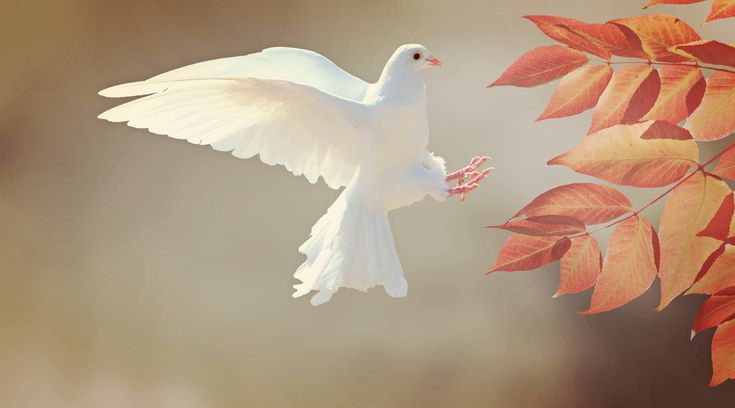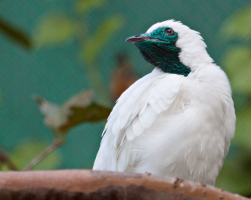Top 10 Friendliest Birds In The World
The animal world is extremely rich and diverse. Especially birds, some individuals impress people with their beauty and character. Let's join Toplist to ... read more...discover the friendliest birds in the world!
-
One of the friendliest birds in the world is the parakeet which is any of several small to medium-sized parrot species in multiple genera that have long tail feathers. There are approximately 115 species of parakeets, which are seed-eating parrots with small bodies, slender builds, and long, tapering tails. Melopsittacus undulatus, also known as the "budgie," is the most common parakeet in Australia. Zoologists first described it in 1891. It is the most common species of pet parakeet in North America and Europe.
Parakeets, also known as budgies or budgerigars, are small members of the parrot family. Budgies, which are native to Australia and live in flocks of hundreds to thousands, have become one of the most popular pet birds. They can improve their mimicry skills and learn to speak a variety of words with practice.
The domestication of the parakeet is a lengthy process that can take days or years. The owner must put in a lot of effort and patience throughout the process. A parakeet, also known as a budgie, is a small and popular pet that originated in Australia. Parakeets have a distinct appearance and are very interactive with their owners.

Photo: worldbirds.com 
Photo: small-pets.lovetoknow.com -
The cockatiel, also known as the weirdo bird or quarrion, is a medium-sized parrot that is endemic to Australia and belongs to its own branch of the cockatoo family. They are popular as house pets and companion parrots all over the world, and they are relatively easy to breed. Cockatiels are the second most popular caged bird after budgerigars.
The cockatiel, also known as the weirdo bird or quarrion, is a medium-sized parrot that is endemic to Australia and belongs to its own branch of the cockatoo family. They are popular as house pets and companion parrots all over the world, and they are relatively easy to breed. Cockatiels are the second most popular caged bird after budgerigars.
The plumage of the "normal grey" or "wild-type" cockatiel is predominantly grey, with prominent white flashes on the outer edges of each wing. The male's face is yellow or white, while the female's face is primarily grey or light grey, and both sexes have a round orange area on both ears known as "cheddar cheeks." This orange coloration is typically more vibrant in adult males and more muted in females. With this bird, visual sexing is frequently possible. The cockatiel is a popular pet bird and one of the friendliest parrot family members. These birds are non-aggressive and easy to care for. This makes them one of the most popular pet birds on the planet. They enjoy human company and are very sociable.

Photo: iaslinks.org 
Photo: facebook.com -
The next position on the list of the friendliest bird in the world is the cockatoo which is any of the 21 parrot species in the Cacatuidae family, the only family in the Cacatuoidea superfamily. They are part of the order Psittaciformes, which also includes the Psittacoidea and the Strigopoidea. The family is primarily found in Australasia, ranging from the Philippines and the Wallacea islands in eastern Indonesia to New Guinea, the Solomon Islands, and Australia.
Cockatoos are popular aviculture birds, but their requirements are difficult to meet. The cockatiel is the simplest cockatoo species to care for and is the most commonly kept in captivity. Captive white cockatoos are more common than black cockatoos. The illegal trade in wild-caught birds contributes to the extinction of some cockatoo species.
Cockatoo is a 17th-century word derived from Dutch kaketoe, which is derived from Malay kakaktua. Cacato, cockatoon, and crockadore were used in the seventeenth century, and cokato, cocatore, and cocatoo were used in the eighteenth. The derivation is also used for the family and generic names Cacatuidae and Cacatua. Cockatoos are birds that people who keep them as pets adore. These birds are intelligent and social. They certainly deserve to be known as the friendliest birds on the planet. Cockatoos are popular house birds due to their ability to mimic sounds.

Photo: petmeshop.com 
Photo: thuvienthucung.com -
The genus Agapornis is the common name for a small group of parrots in the Old World parrot family Psittacidae. All nine species in the genus are native to Africa, with the exception of the grey-headed lovebird, which is native to the African island of Madagascar.
The name comes from the parrots' strong, monogamous pair bonding and the long periods of sitting together that paired birds spend. Lovebirds feed on fruits, vegetables, grasses, and seeds in small groups. Insects and figs are also eaten by black-winged lovebirds, and Black-collared lovebirds have a special dietary requirement for native figs, making them difficult to keep in captivity.
Lovebirds are 13 to 17 cm long, have a wingspan of up to 24 cm, with a single wing measuring 9 cm, and weigh 40 to 60 g. They are among the smallest parrots, with a stocky build, a short blunt tail, and a large, sharp beak. Depending on the species, wild-type lovebirds are mostly green with a variety of colors on their upper bodies. A prominent white ring surrounds the eyes of Fischer's lovebird, a Black-cheeked lovebird, and a masked lovebird. Many color mutant varieties have been produced through selective breeding of popular aviculture species.

Photo: wikipedia 
Photo: wikipedia.org -
Finches are small to medium-sized passerine birds in the Fringillidae family. Finches have stout conical bills that are adapted for eating seeds and nuts, and their plumage is often colorful. They inhabit a wide variety of habitats where they are typically residents and do not migrate. Except for Australia and the polar regions, they are found all over the world. The Fringillidae family contains over 200 species divided into fifty genera. Siskins, canaries, redpolls, serins, grosbeaks, and euphonias are among the species.
The finches are found almost everywhere, including the Americas, Eurasia, and Africa, as well as some island groups such as the Hawaiian islands. They are not found in Australasia, Antarctica, the Southern Pacific, or the Indian Ocean islands, despite the fact that some European species have been widely introduced in Australia and New Zealand. Finches prefer densely forested areas, but some can be found in mountains or even in deserts.
Finch birds are some of the friendliest birds on the planet. They are one of the few birds that get along with humans. They are simple to tame and train, and they make excellent pets, particularly for children. Finch is one of the friendliest birds in the world.

Photo: wikipedia 
Photo: laferbe.com -
Conures are a diverse and ambiguous group of small to medium-sized parrots. They are classified as long-tailed parrots in the New World parrot subfamily Arinae. The term "conure" is mostly used in birdkeeping, but it has appeared in some scientific journals as well. The American Ornithologists' Union uses the generic term parakeet for all species called conure elsewhere, though prominent Australian ornithologist Joseph Forshaw prefers conure.
Males and females are both the same color. Green-cheeked conures have bright red feathers in their tails and on their chests, bright green on their backs and the tips of their wings, olive green surrounding the red patch on their chest, a whitish ring around the neck, black plumage on the head, and olive green patches on their cheeks. Their long pointed tail is predominantly blue or maroon in color. Their beaks and feet are black, and they have bare white rings around their eyes.
Conures can be very playful, cuddly, and loud at times. A conure is more likely to be curious and daring than shy and cautious. Conures are active and busy birds that require a lot of toys and other forms of enrichment to keep them happy all day. Because of their playful and outgoing personality, conures make excellent family pets. Children should be taught how to interact with conures in a family setting, including proper handling and not forcing interaction. Conures can talk and, while their vocabularies aren't as large as those of other parrot species, they can learn to say a few words and phrases.

Photo: small-pets.lovetoknow.com 
Photo: problemparrots.co.uk -
Doves can be found almost everywhere on the planet, and there are hundreds of different species. However, only a few dove species are commonly available as pets, with the diamond dove and the ring-necked dove being the most popular.
Doves require different housing than parrots. Doves, unlike parrots, cannot climb the cage bars; instead, they move around by flying back and forth, so a wide cage is essential. Provide a variety of perch styles and diameters to encourage good foot health in your dove. Bathing opportunities are also required for doves.Doves, on the whole, are hands-off pets. Forcing interaction may result in the bird being terrified or, worse, in a broken wing. Some doves, on the other hand, can be trained by hand. Doves are quite social with their peers and can become accustomed to taking food from their hands.
Doves require grit in their diet because they eat their seeds whole, unlike parrots. Provide a calcium supplement as well as various types of grit, especially during breeding. Though it may be tempting to breed these birds all year, doing so will leave them exhausted and weakened. Most aviculturists recommend resting them for a few months between clutches. Ring-necked doves can live for more than ten years if properly cared for.

Photo: pinterest.com 
Photo: pinterest.com -
The Pacific Parrotlet has become one of the country's most popular small birds, and it is the most common of the parrotlet species. These "pocket parrots," which originated in Mexico, Central and South America, have quickly gained popularity. They have the personality of a "large bird in a small bird's body," and are frequently compared to Amazon parrots, a parrot family thought to be their close cousins. They do resemble Amazons, with their short, stout bodies and somewhat blunt tails. The male has a green rump and wing coverts with a blue streak behind the eye. Females lack the blue coloring but may have a faint blue streak behind the eye.
In general, parrotlets are feisty, affectionate, and stubborn. If someone wants a great companion, they should only keep one bird, because a pair of parrotlets will most likely bond to each other to the exclusion of the owner. Parrotlets, on the other hand, are dimorphic and easy to pair up with, and they enjoy each other's company. They can also be kept peacefully in large aviaries in groups, but it is best to keep them separate from other species. Keep in mind that they will argue and fight over objects and territory.
Parrotlet birds are popular due to their charming appearance and ability to mimic the sounds of other birds and humans. Parrotlet birds are friendly and intelligent, and they prefer to spend as much time as possible with their owners. Raising parrotlet as a pet is ideal for bird lovers and families with children.

Photo: thesprucepets.com 
Photo: thesprucepets.com -
The next position on the list of the friendliest birds in the world is the Pionus which are all between 10 and 12 inches long and have the same basic shape, with a short, square tail like Amazon parrots; a bare, fleshy eye-ring circling the entire eye; and red feathers at the vent. These are the only physical characteristics that Pionus share — they differ so greatly in a color that it's difficult to understand why field biologists group them all together.
In general, Pionus parrots make excellent family birds and are not prone to being "one person" birds, though this varies by individual. Even though the Pionus bite isn't as strong as that of the Amazon or the cockatoo, unsupervised children should not be allowed to play with the Pionus or any other parrot.
When most birds are scared, they either flee, bite, or remain perfectly still. The Pionus does these things, as well as another interesting survival technique: it hisses in short bursts, almost as if it's having difficulty breathing. When frightened, cockatiels make a similar noise. Some Pionus owners report that their birds have a sweet, musky odor.

Photo: lafeber.com 
Photo: thesprucepets.com -
In the popular Poicephalus family, the Meyer's parrot has long taken a back seat to its more colorful family member, the Senegal parrot. Both birds are about 8 to 9 inches in size and were once widely imported, but the Meyer's is pickier about breeding in captivity, which may explain why it is still second fiddle to its close cousin. Many breeders who have focused on African parrots, particularly Meyer's, have had good success with them.
The temperament of this affectionate, quiet, easygoing bird is stable. "I go with the flow," Meyer's parrot's motto would be. It is not an athletic or clownish bird, preferring to observe everything carefully and with a keen eye. The Meyers are content to sit quietly on a perch chewing on a toy and watching the world go by. They are social birds who bond with everyone in the family, as opposed to other species who may prefer one person over another. In general, this bird is not fickle; once it likes someone, that person becomes a lifelong friend.
Though not cuddle bugs, these birds are affectionate and enjoy being handled and scratched on the head and neck. If properly cared for, a hand-fed baby will grow into a gentle adult who is not prone to nipping but can deliver a powerful bite if provoked.

Photo: thesprucepets.com 
Photo: mascotarios.org































